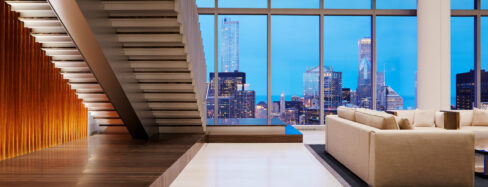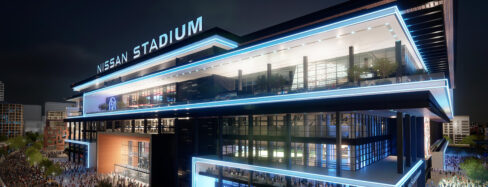Early in my career, I was very fortunate to work on some prestigious museum projects in New York City. I learned a great deal hearing from people with keen eyes, mocking up many different lighting details, and reviewing how materials reflect light that gets rendered though our visual system. I had never imagined how much science went into lighting design, such as how light gets shaped, absorbed, and sometimes vanishes depending on material’s reflectance. There are so many variables in the technical equation of lighting design for museums and art, but in my experience there are three key elements around various collaborative relationships between the experts that bring success to museum lighting projects.
Visionaries
Artist don’t make art for an empty room; they make art for people to interact with. Art comes alive when there is an experience between aptitude and audience, and what ties the art with the audience is light. Architecture that houses art creates an immersive environment that influences how people interact with the space and artwork through light. Museum scholars who understand the essence of art pieces and curatorial vision provide the core guidance for the design team. They must understand the historic tradition of design and simultaneously retain a free mind so that innovation can happen according to the needs of each project and its supporting vision.
Technical
Without the dedication of people who are behind the product design and craftsmanship, we cannot do our job. As lighting designers, it is our job to envision the illuminated environment that doesn’t necessarily exist. We often find ourselves saying “wouldn’t it be great if the lighting effect can achieve this?” or “I like that white light but not this white light, and it could be better if it had more of this quality – so that the blue of that painting doesn’t appear so dead.” I continue to be amazed by the knowledge that lighting manufacturers and product engineers have. It is the relationship between engineers and designers that create opportunities to innovate. In the continuously evolving field of lighting, I often find myself facing both the excitement of new possibilities and overwhelming information of new technology. This challenge, however, is the reason for my passion in the field. The “lighting wizard” role of eliminating unwanted shadows on artwork and transforming a space purely based on adjusting lighting fixtures is only possible because of the tools I have, created by the technical masterminds in this field.
Audience
The audience is who we design for. The exciting part of being involved in museum projects is the fact that they will be enjoyed by the public. There is a wide range of audiences, and our collective design shapes their experience with art. Although the experience will be different from a person to person, there is a fundamental common thread in how humans perceive light. To create successful lighting environments that are focused on art, it is important to understand our visual sensory system and how it differs from person to person. This impacts how we experience color, eye adaptation, brightness adaptation, and perceived contrast vs the actual measurable contrast. With lighting for art, conservation requirements determine the amount of light that can be used to showcase an object. When the design team works together to create a holistic and human-centered experience, it is possible to make light-sensitive tapestry appear “bright” solely because of the environment it has created.
My journey of illuminating museums continues to evolve with available technology. Whether it is re-creating a traditional museum setting with improved lighting quality and efficiency or designing an interactive and immersive experience with dynamic lighting, it continues to bring new possibilities. It is an honor to be involved in this field and to practice the art of light.






